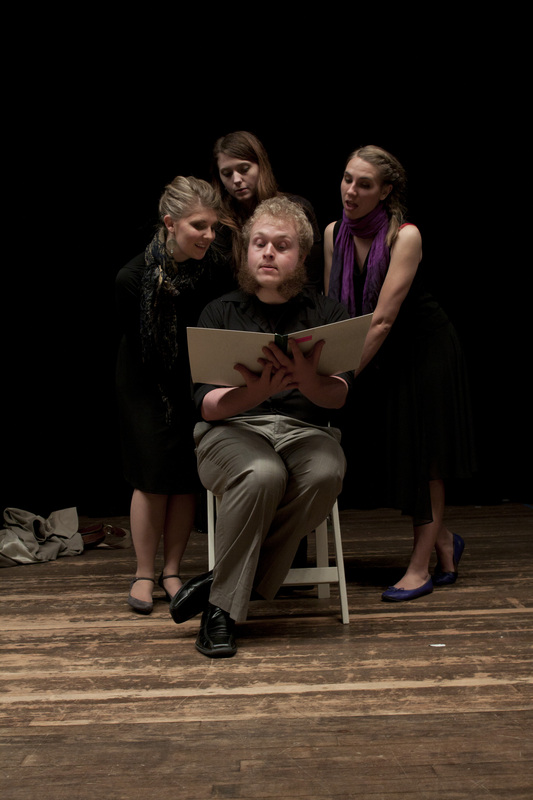Sounds, not silence, in a Cage percussion piece
By Robin Amer

Sounds, not silence, in a Cage percussion piece
By Robin AmerJohn Cage’s best-known composition is often referred to with this descriptive shorthand: “four minutes and 33 seconds of silence.” It’s not completely silent – Cage really wanted listeners to revel in the tiny, minute sounds present in the room. But the piece – its proper title is 4’33”– is in some ways a poor representation of the experimental composer’s oeuvre. Rather than revel in the quiet, his work celebrates all of the many cacophonous ways to make and experience sound.

A good example of Cage’s noisier side is Living Room Music, a 1940 composition so named because Cage wanted performers to use whatever household objects or architectural elements happened to be handy as percussion instruments. He did offer some suggestions, though: a wooden window frame, perhaps (good for tapping) or “largish books.” Then the piece segues into vocal territory; performers recite selections from Gertrude Stein’s 1939 prose poetry children’s novel, The World is Round:
Once upon a time the world was round and you could go on it around and around.
Everywhere there was somewhere and everywhere there were men women children dogs cows wild pigs little rabbits cats lizards and animals. That is the way it was. And everybody dogs cats sheep rabbits and lizards and children all wanted to tell everybody all about it and they wanted to tell all about themselves.
Clearly, Cage was not aiming for accessibility here. But the result is rhythmic and compelling, and more than 70 years later, not like much you’ve heard before.
There were numerous concerts this year to mark the centennial of Cage’s birth, including a three-day festival in Chicago in mid-April devoted to Cage produced and curated by the experimental concert series a.pe.ri.od.ic. The festival included a performance of Living Room Music by the Bowling Green, Ohio-based Quince Contemporary Voice Ensemble, which specializes in an “experimental repertoire.”
We’ve included a selection to whet your appetite. Listen in the audio above.
Dynamic Range showcases hidden gems unearthed from Chicago Amplified’s vast archive of public events and appears on weekends. The Quince Contemporary Voice Ensemble performed at an event presented by the Chicago History Museum in April. Click here to hear the event in its entirety.